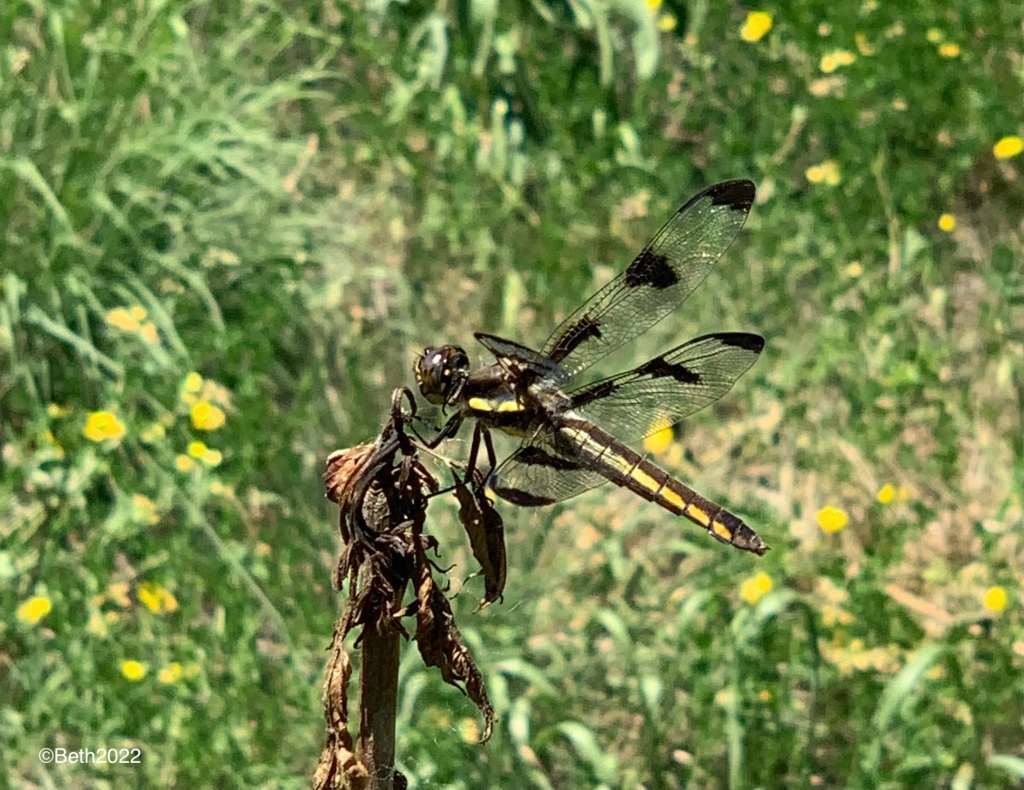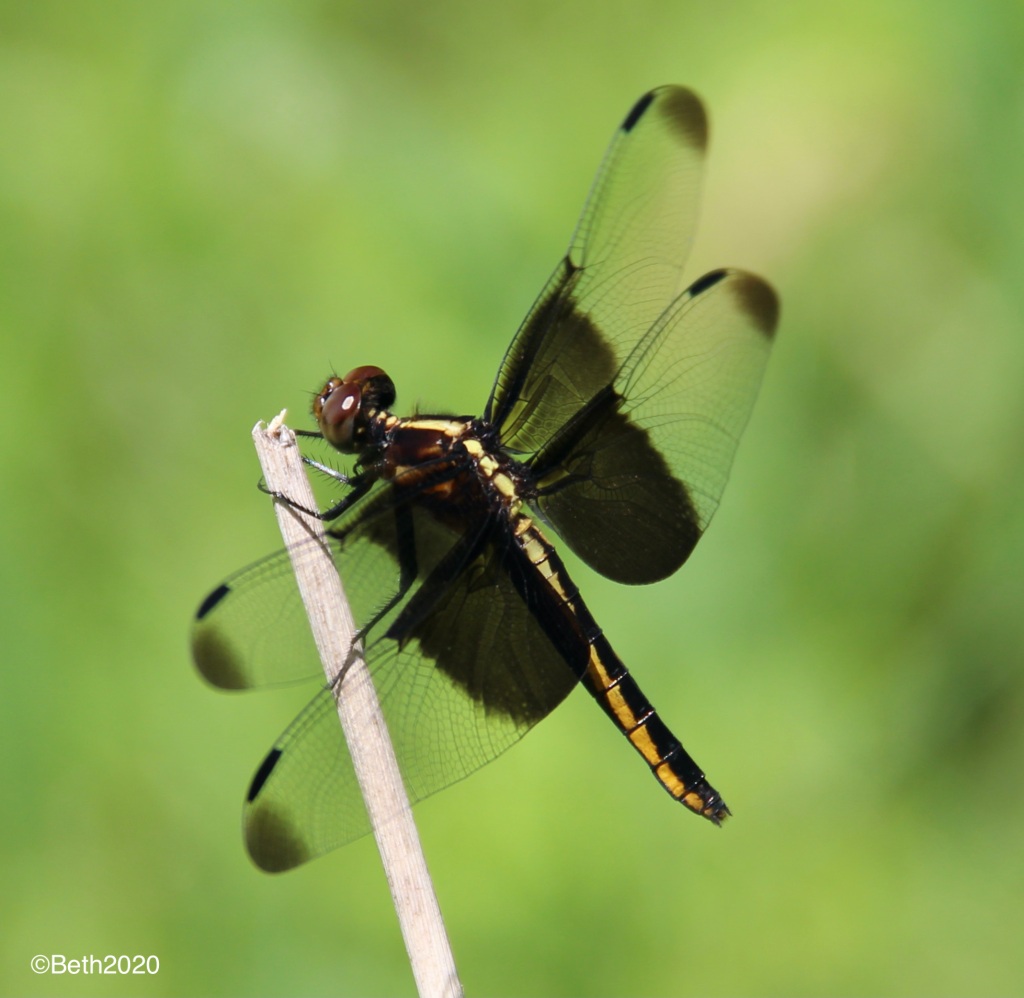
What do you think of when you hear the term skimmer? A shore bird, a kitchen utensil, or perhaps a type of shoe? Skimmer also refers to the earth’s largest family of dragonflies, Libellulidae.
Skimmers might be the image that many envision when they “think dragonfly.” Skimmers’ wings are large and patterned with spots — usually black and a powdery grayish-white. Like all dragonflies, skimmers hold their wings spread out horizontally from the body when resting. The head is large with eyes that contact each other on top. Two inches is a common body length, but it can vary between one and three inches. Adult skimmers dine on many soft-bodied insects, especially mosquitoes, flies, small moths and winged ants. Nymphs, or immature dragonflies, develop underwater where they eat mosquito larvae, fly larvae and other aquatic organisms. Skimmers are preyed upon by raccoons, skunks, shrews, bats, turtles, snakes, frogs, fish, spiders, larger insects such as praying mantids, and many bird species.

The twelve-spotted skimmer (Libellula pulchella) and the widow skimmer (Libellula luctuosa) are two common skimmers of Minnesota. Though similar in appearance and size (about two inches long), the difference is in their wing spots. Male twelve-spots carry 12 black patches and eight white spots between the black ones. Male widow skimmers show a dark black wing patch from the wing’s base to about midwing. One large white spot extends outward from the black patch. Female and young juvenile males of both species only exhibit black patches. Males and females of both species are coppery brown, but adult males develop a whitish-blue dusty or frosted appearance, called pruinose, on the abdomen. Both species sport bright, neatly etched side stripes — yellow in twelve-spots and orangish in widow skimmers. In addition, the thoraxes of mature twelve-spotted skimmers display two yellow stripes.
Why the name widow skimmer? One explanation is that most male dragonflies carefully guard their mates during egg-laying, but widow skimmer females deposit their eggs unguarded, and thus became commonly known as widows. Another is that the black wing patches were thought to be reminiscent of a widow’s shawl.

Both skimmer species may be found near ponds, lakes and marshes, but they also venture away from water into fields and meadows. I observed two twelve-spotted skimmers in a small area of oak savanna in Saint Paul, about three city blocks away from a pond. One perched on a dead tree limb, the other atop a dried up forb, wings spread horizontally and glistening in the sun.
Though not the most eye-catching of dragonflies, I like them; they’re easy to observe because they often forage in open areas away from water and remain close to their conspicuous perches. Both species share a similar geographic area. Twelve-spots range throughout most of southern Canada, the continental United States and northern Mexico. Widow skimmers occur in southern Manitoba, Ontario, Quebec and Nova Scotia, across the United States, except for the Rocky Mountain region, and in a portion of northern Mexico. Both skimmer species are on the wing during the summer months and the twelve-spotted skimmer is active through September.
Further Reading

I just spotted this type of dragonfly last night!
Hi Susan, I’m glad that you are out noticing the dragonflies and other lovely creatures! I’ve seen several different kinds in our garden recently. Thanks for reading my blog!
So fun to read this, Beth. I’ve only seen a couple dragonflies when we were up north 2 weeks agao. I love how beautiful they are and how quickly they doge and dart as they fly!
Thank you, Lisa. They are beautiful and I hope that you see many more in the coming weeks — prime dragonfly-watching season!
You are always interesting and informative.
Beautiful photo graphs.
Thank you, Mary!
Managed to get a good photo of a skimmer recently.Hope you and the rest of the family are well. Cousin Mike
Thank you, Mike! Glad that you are out taking nature photos. I hope that you and your family are well, too. Thanks for reading my blog.